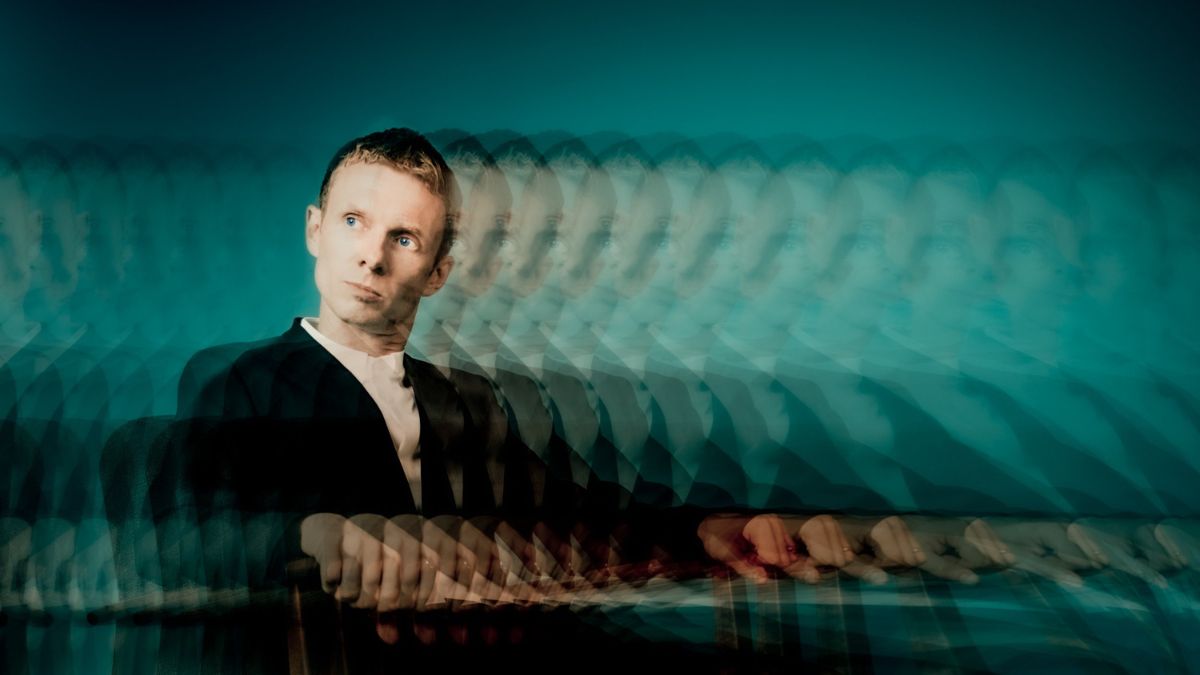Kormac is a composer, producer, DJ and sonic adventurer from Dublin. In a career that has spanned more than 15 years, two albums, hundreds of live shows the world over and major TV and film soundtracks, he has honed his craft, twisting organic sounds into wide-screen electronica and working alongside a plethora of highly respected artists across a range of mediums.
Connect with Kormac on Instagram | Twitter
With his new eight-track album Equivalent Exchange, Kormac has delivered an ambitious and fully realised electronic-leaning project featuring a host of exceptional collaborations.
With a vinyl edition of the album about to land, we caught up with Kormac to get the lowdown.
Thanks for talking to us today – how did 2022 treat you?
My pleasure! Thanks for chatting. Music-wise, it was a great year. Hectic, but great. I loved, finally, getting my massive, collaborative, orchestral project, Equivalent Exchange, out there.
We started my Always The Sound label and began researching and, ultimately, releasing in Spatial Audio.
I also spent the first half of the year scoring my first feature film and the later half of the year scoring a 6 part drama series – my third to date.
Away from music, it was bittersweet – as life can be. To say nothing of what’s going on in the world right now, on a personal level, I had some lovely moments with my son, wife and friends and some quite hard moments as we lost a family member. I guess life is like that.
First of all, we want to get to know you “from the beginning”. How did your history with music begin?
I began playing the guitar – and later drums – when I was in school. I was 12. Throughout my teenage years, I was really into heavy metal, grunge and experimental guitar bands (like Sonic Youth.) When I was about 17 I discovered jungle/drum n’ bass, started DJing and then began using hardware samplers and computers as my main tools to make music. I was also in a Super Furry Animals-type band during this period and produced some records with them. It was after all this, in 2010, that I began releasing solo records under the ‘Kormac’ name.
For you, what is the magic of music? The thing that makes it such a big part of your life?
It’s all-consuming. Making music, honestly, occupies way more of my headspace than it probably should. It’s an addiction of sorts. I’m never finished or satisfied. The itch is never scratched.
I think I’m lucky to be this way. To have a passion is a wonderful thing. I wake up every morning excited for the day ahead which is a real gift.
Your new album Equivalent Exchange has been out for a while now… how has it felt to have something you worked on for so long out in the public domain?
In short, great. It was lovely to get it out and launched before the end of ‘22.
The orchestra and all the musicians and featured artists that I worked with poured a huge amount of themselves into it and I’m really proud of what we have achieved together. The idea from the get-go was to make this record sound like it was being performed in front of you in a concert hall and I mixed the album with that firmly in mind.
I also did a Dolby Atmos (spatial audio) set of mixes which really helps put the listener in the exact spot I’m aiming for. If you have Spatial Audio enabled on your phone (in settings) I’d encourage you to have a listen on Apple Music or Amazon Music.
A lot of your previous work has been based on sampling, while here there are so many collab and live instruments. How do you think that affected the overall album?
For sure, my early ‘Kormac’ releases were sample heavy but I’ve actually been recording live instruments for way longer than I’ve been sampling. I learned pretty early on that I could gain so much more from manipulating samples I create myself and all bar one releases have vocal, brass, drum recordings on them. Recording is an easier (and cheaper) way to get the result you want if you know how to go about it.
That said, I had only been recording orchestras for a year or so before I did Equivalent Exchange. It certainly requires a lot more planning and you’ve got to get a system together and stick to it.
I think the abundance of strings on the record makes for a more emotional connection with the listener. I knew I was going to have this sonic palette to work with as I was writing the record and really tried to use the strings for that purpose – to make the listener feel something.
How has it been performing the album live? Are there any particular tracks that have been especially well-received?
It’s been amazing – a total joy. Having the strings on stage interacting with the rhythm selection, brass and electronics – as well as all the guest vocalists – has proven quite the spectacle and the audiences have been wonderful.
To be honest, I’ve been getting a bit emotional seeing it all come together and having so many of the artists live with me. Must be all those strings 😉
To what extent do the tracks evolve when you’re playing them live?
With that amount of players, technology and moving parts involved, there’s not much room for improvisation. The orchestra is reading from sheet music and other sections receive click tracks, cues etc on stage so if someone went off-piste it would be a bit of a nightmare! The vocalists would have the most freedom, I guess.
Are there any cutting room floor tracks that might be released at a later date?
There are! One, in particular, is called, Waiting On You.
What does your current studio set up look like? Lots of hardware, or are you mainly ‘out of the box’ type producers?
I guess I have a bit of a hybrid setup going on! I like to record and/or make sounds outside the box and then twist and morph them in the box. My main rig runs Ableton (where I do most of my writing,) Pro Tools (for recording and Spatial Audio mixing) and Logic Audio (just for film/tv scores as it understands SMPTE timecode) through 3 x Universal Audio interfaces feeding Genelec 8340s and Yamaha NS10s. I have a clone of this rig in the room next door for assistants when working on film/tv scores.
I use the Kontakt sampler and try to keep plugins, somewhat, to a minimum – a lot of Universal Audio stuff, Altiverb, Soundtoys, Fabfilter, Valhalla and not a huge amount else. I really prefer to have a small number of great tools that I use every day than a huge folder full of unused VSTs.
I have a modular area in the room with Moog Mother 32, DFAM and Subharmonicon as well as some Erika Synths and Makenoise bits and I’ve just added a Somasynths Lyra 8.
That’s the main stuff that doesn’t really move and after that, it depends on what I’m working on. I like to keep the space fluid and ever-changing. Some days there are mics everywhere and other days it could be different synths, guitars, percussion, and santoor. Anything goes…
What is the best advice you ever received as an artist?
Make music for yourself!
What is your your focus for 2023?
A gorgeous Equivalent Exchange vinyl package made in collaboration with my artist friend, Maser is coming out soon.
I’m currently working on the next Kormac release for my Always The Sound label and a documentary soundtrack. I have a new drama series and a film score airing this spring and some club and festival shows so it’s looking like a busy/fun year ahead..
Anything else you’d like to tell us…?
I’d love you to listen to the new album anywhere you get your music.
Thank you.





